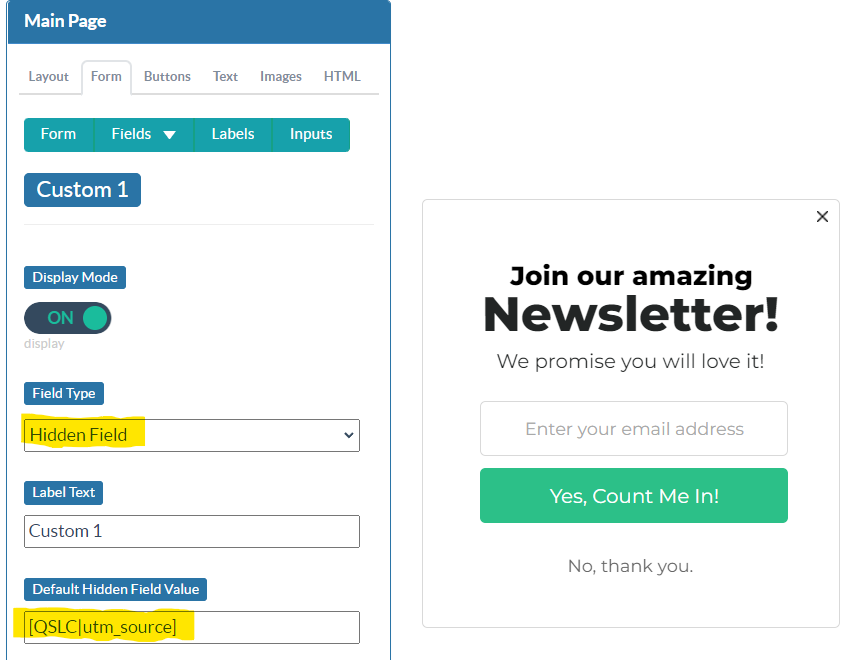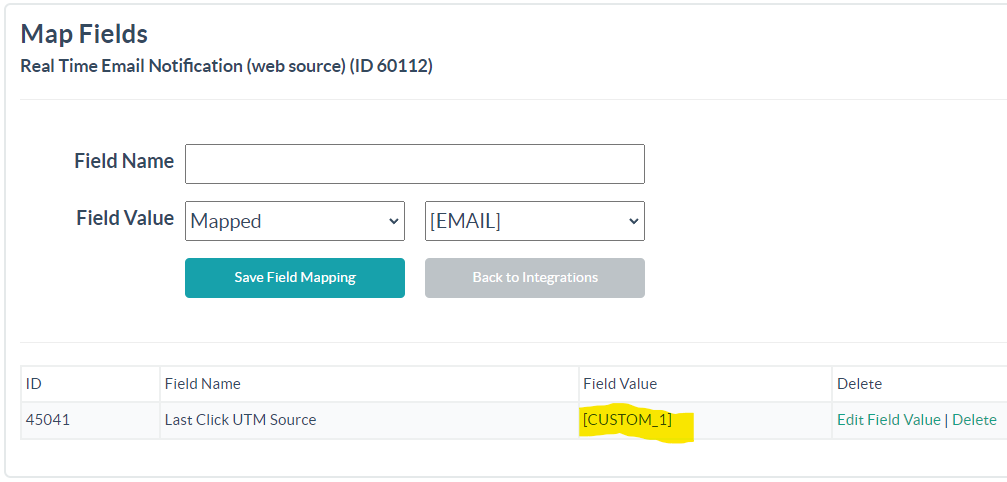When you capture an email address and/or phone number, you may want to include attribution data in the data sent to your Digioh integrated messaging system (i.e. email platform or CRM). For example, commonly, marketing attribution is indicated by URL parameters utm_source, utm_campaign, etc that are added to links by your advertising platform or referral partner. Digioh supports passing this data, with either first-click or last-click attribution (or both).
Here’s how to capture and send this attribution data (or any URL parameter) along with Digioh form submissions.
1. Install the “Universal Merge Tags” Digioh App
2. In your Box, create one or more hidden fields to store the utms, and set the “Default Hidden Field Value”

3. For first click attribution use the QSFC merge tag, e.g. [QSFC|utm_source]. For last click, use QSLC, e.g. [QSLC|utm_campaign]. If you want a default of something other than blank, you can configure it like this: [QSFC|utm_source|default-value].
4. Set up as many of these as you need, and note the custom field numbers that you used.
5. Go to the Integrations tab and update the Integration you are using for your Box. Note that the exact process here depends on your specific integrated platform, so this screenshot may not correspond exactly to your situation, but generally speaking we are going to include [CUSTOM_1], or whatever custom field in which you stored the utm value, in the data send.

That’s it! You can capture any number of URL parameters this way, as either last click or first click or both. The Universal Merge Tags app automatically stores all query string data in the users browser, retaining the first and last values seen. Capturing UTMs is just a specific use case for this general purpose behavior. Note that if you want to capture UTMs for only the current page, and not a “sticky” session-level or user-level UTM, then you can use the merge tag [QS|utm_source], for example. This pulls values directly from the URL of the current page, as opposed to the sticky first or last click from storage.
